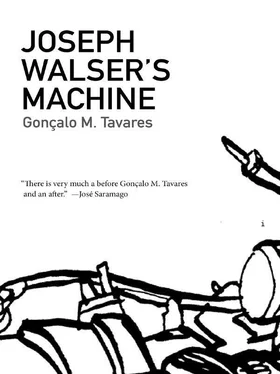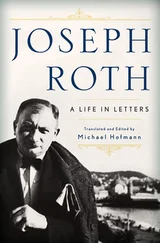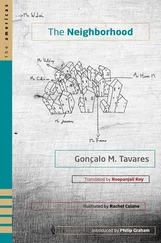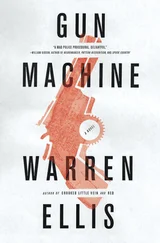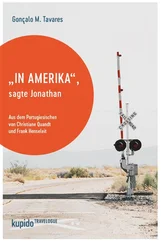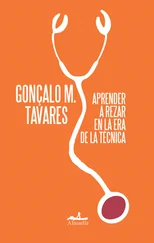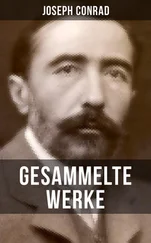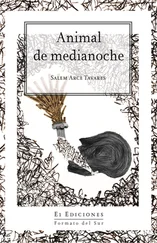Soon enough, with the two dice in his right hand, at the moment when the dice, instead of rolling from his middle finger to the index finger, were forced to proceed directly from his middle finger to his thumb: at that very moment, an instinctive moment — after having played many dice games under his “new material conditions” (an expression that Walser himself employed, out loud, when referring to himself) — at that essential moment, Walser no longer felt the impulse or desire to roll the dice toward the spot where his index finger had once been; that is to say: in just a few weeks’ time the most violent amputation of all had been accomplished: the amputation of his desire. His immaterial being had suffered an accident, just as though it had returned to the moment of the concrete, real accident. There was no exact date for this second accident, as there was for his accident with the machine, but about three months after the first, objective date, the one that could be pointed to on a calendar, Walser lost something else.
Yet it was still strange for him to notice that, with even less possibilities available to him — with the shorter path that the dice now had to take as they rolled around in his right hand — his luck had improved. In an objective, external way, in the material world of the dice game, his increased winnings corresponded to the decreased possibilities of his movement. And even though he was sure that the outcome of a roll of the dice had nothing to do with whether he had five fingers or four fingers on his hand, Walser looked upon his recent spate of good luck as a mystery, and this mystery bespoke an entrance to another world, a world with which he was yet unfamiliar. For Walser, the connection between those two facts — one less finger, more luck in the dice games — was still incomprehensible and impossible to catalog. Where does one situate the connection? How does one classify the link that existed between these two facts? Which occurrence should Walser classify as the cause and which the effect? And if neither were the cause nor effect of the other, how to classify them, and what other facts could be linked to these two?
To Walser, the opposing hypothesis seemed the most absurd. If he accepted that these two facts weren’t connected in any way, but instead depended on other factors, then he would have to accept that his body and existence weren’t defined internally, but externally. Did his personal, private luck depend on the war, or the course that it took? Might it depend on the number of dead soldiers or dead insurgents? If this hypothesis were correct, the world would seem even stranger to Walser than it already did.
Such confusion aroused, in Walser, an urgent need to feel safe, which he only felt when he was locked away in his study, in front of his collection. In his study everything was finally whole. There was nothing left to explain. All the pieces of metal were in their proper places on the shelves; they were perfectly coordinated with the records contained in his notebooks, all without a single mistake. Nothing superfluous, nothing missing. And only this precision could comfort him. If the world could be nothing more than his collection, Walser would then have to be described as a happy man — indeed, a powerful one.
However, the occupation continued and — even though the resistance was starting to show signs of weakening — soldiers continued to die. The most significant piece of news was that Ortho — that important military official and war hero, who had already survived a number of assassination attempts — had finally been assassinated. He was killed during his own wedding, by a musician.
The war continued apace: like a lunatic, or maybe like some other thing.
Margha Walser wouldn’t be considered a pretty woman, but she wasn’t completely uninteresting.
Margha had black hair, which was perhaps too long for someone her age, and buttocks that were too big for the average male taste, but her firm-looking breasts compensated for that slightly “unfortunate feature,” if one can call it that. She had light-colored eyes, and even though she wasn’t a tall woman, she was almost the same height as Walser, which had always sort of bothered her, although she wasn’t conscious of it. For Margha, tallness was emblematic of the man who could protect her in any situation.
In those difficult times — on top of which came the reduction of her husband’s salary — Margha Walser tried to maintain some sense of stability. Hygiene and nourishment were the two foundations of any home, and Margha Walser didn’t tolerate failures in either of these areas. She and her husband had never lacked a robust meal at lunchtime; there were no major luxuries in their household, but nothing essential was ever left out. On top of all her other expenses, she always set aside a small amount that represented two months’ worth of future expenditures, and this was a point of pride for her, since it constituted something like a guarantee that they would stay alive, the two of them, she and her husband (at least for the next two months), since they had enough saved to buy food. Her logic could be summed up succinctly in the following formula: “How could we possibly die while we have food?” As if there were no other reason for human death than a lack of food.
It was a weekday, Thursday, and after a peaceful dinner at his wife’s side, Joseph Walser had, for a few minutes already, been sitting alone at the table, reading his newspaper. Margha Walser appeared at the entryway to the dining room; the sound of her high-heeled shoes disturbed Joseph, and he raised his head. Margha was now standing a few yards away. Wearing makeup, and a skirt she rarely wears.
“Joseph,” she said, “may I go out?”
Walser folded his newspaper and stood up from his chair, moving rapidly. He turned his back on his wife, without looking at her, and walked over to the drawer where he kept the key to the study. He took it, opened the door, and entered the study. The sound of the key locking the door from inside was heard.
Inside the study, everything was in its proper place, as always. He pulled out the chair with his right hand and sat down. The empty space that his index finger once occupied no longer disturbed his view in the least. It was as if his hand had been born like that, born together with him.
He opened his notebook and leafed through the few pages of new entries with his right hand. The most recent addition to his collection was a small metal ring, about 1.2 inches across, that he had requested from a woman who was about to put it in the trash.
“What do you want this for? It’s useless,” the woman had said.
“I’m conducting research,” Walser had replied.
The woman’s incredulous expression in response to his claim of “research” had no effect on his actions. “I thank you,” he had said, “this is a very important piece for me.” That piece was now on the desk in his study, right in front of him.
Walser felt a certain perplexity with regard to the piece of metal. He had already recorded all of its dimensions, he’d already made a precise drawing of it, and also recorded the place and the circumstances in which he had “found” it, but something essential was lacking: What mechanism did that piece belong to? At the time, he had asked the woman and she didn’t know the answer: “It was left in the doorway of our building. I don’t know where it came from. Maybe from the war.”
The metal ring didn’t look like it belonged to any domestic object. In fact, it could be a part of a weapon or some sort of military device.
For Walser, the most fascinating parts of this work were those moments when he felt like he was doing “research.” Where did this piece come from? What mechanism had made it function? Or, to pose that question another way: what mechanism no longer functioned as a result of missing this piece, which had been abandoned in front of a building? Yes, there was no doubt about it: this piece of metal had belonged to a weapon.
Читать дальше
